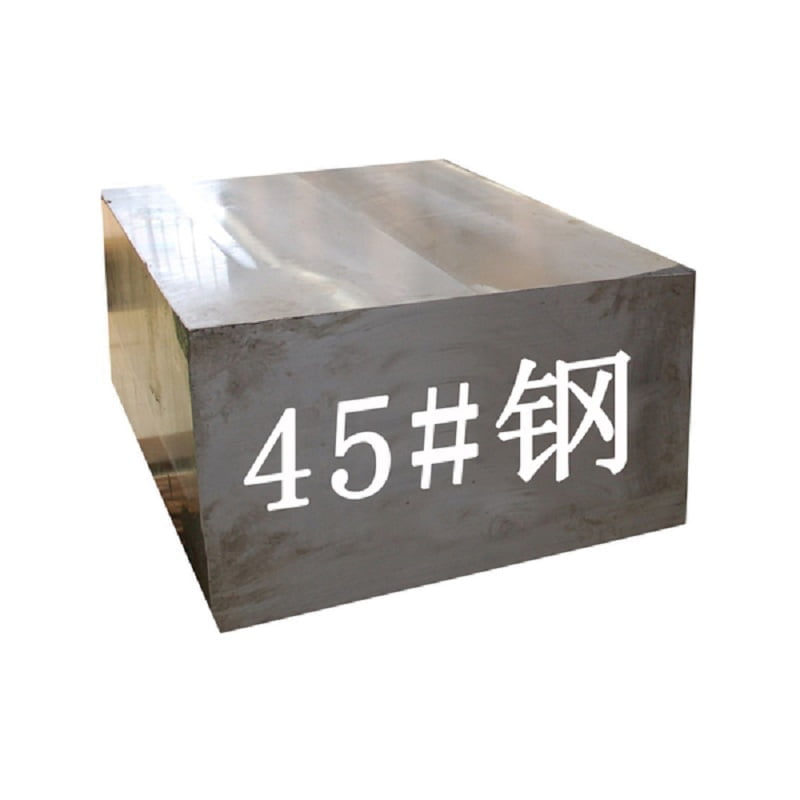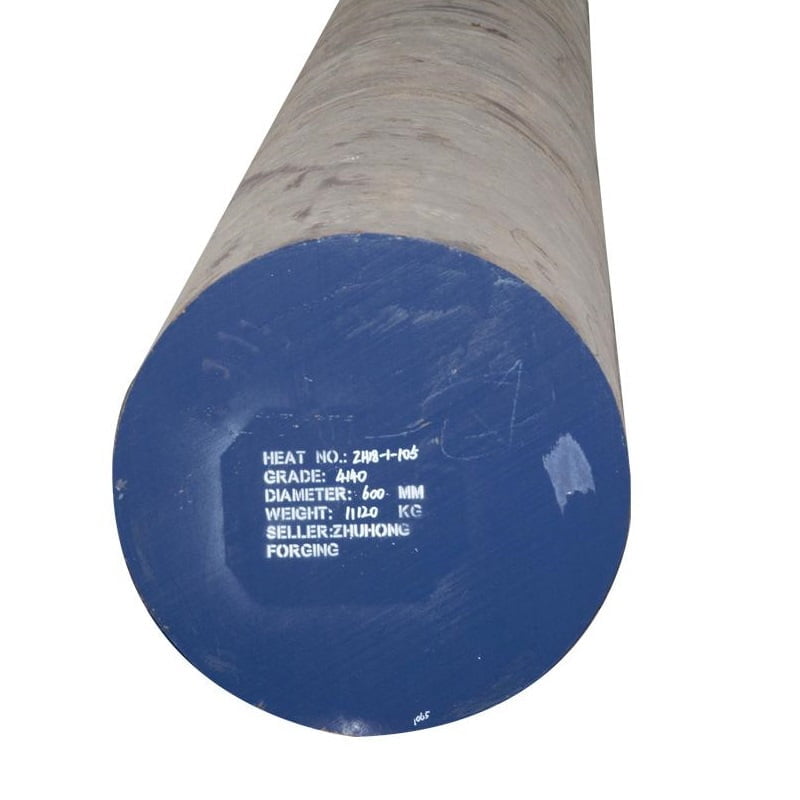
導入
S45C と 42CrMo4 は、さまざまなエンジニアリングおよび製造用途で広く使用されている 2 つのグレードの炭素鋼および合金鋼です。この記事では、化学組成、機械的特性、熱処理応答、用途、それぞれの長所と短所に焦点を当てて、これら 2 つの材料を徹底的に比較します。
化学組成
S45C と 42CrMo4 の両方の化学組成は、それらの機械的特性と全体的な性能を決定する上で極めて重要です。
| 要素 | S45C組成(%) | 42CrMo4 組成 (%) |
|---|---|---|
| カーボン(C) | 0.42% – 0.48% | 0.38% – 0.45% |
| マンガン(Mn) | 0.60% – 0.90% | 0.60% – 0.90% |
| クロム(Cr) | – | 0.90% – 1.20% |
| モリブデン(Mo) | – | 0.15% – 0.30% |
| リン(P) | 0最大.03% | 0最大.03% |
| 硫黄(S) | 0最大.03% | 0最大.03% |
化学成分の説明

- カーボン(C): S45C よりわずかに高い炭素含有量を持っています 42CrMo4、その特性に貢献します。通常、炭素含有量が高くなると、硬度と強度が向上します。
- クロム(Cr)とモリブデン(Mo): 42CrMo4 にはクロムとモリブデンが含まれており、硬度、耐食性、靭性が向上し、動的および高応力の用途に適しています。
- マンガン(Mn): どちらのグレードも同様のマンガン含有量を持っており、脱酸を促進し、焼入性を向上させます。
機械的性質
機械的特性は、負荷やストレス下での性能を決定する上で重要な役割を果たします。
| 財産 | S45C | 42CrMo4 |
|---|---|---|
| 降伏強さ(MPa) | 約355MPa | 約600~800MPa |
| 引張強さ(MPa) | 570~700MPa | 700~900MPa |
| 伸長 (%) | 14% (最低) | 12% (最低) |
| 硬度(HB) | 170~210HB | 250~300HB |
機械的性質の詳しい説明
- 降伏強さ: 42CrMo4 は S45C よりも降伏強度が大幅に高いため、高応力用途により適しています。
- 抗張力: 同様に、42CrMo4 の引張強さは S45C の引張強さを上回り、耐荷重能力が優れていることを示しています。
- 伸長: S45C は伸び特性に優れており、42CrMo4 と比較してより多くの塑性変形が可能です。
- 硬度: 42CrMo4 は一般に S45C よりも硬く、耐摩耗性と耐久性に貢献します。
熱処理の反応
熱処理プロセスは、両方のグレードの機械的特性に影響を与える可能性があります。
| 熱処理タイプ | S45C | 42CrMo4 |
|---|---|---|
| 焼入れ | 硬化に適しています | 硬化に適しています |
| テンパリング | 強度を維持しながら脆性を軽減します | 硬度を向上させながら靭性を向上させます |
熱処理の説明
- 焼入れ: どちらの材料も焼入れして硬度を高めることができますが、42CrMo4 はその合金元素によりより高い硬度を実現する傾向があります。
- テンパリング: 応力を緩和するために焼入れ後に焼き戻しは必須です。どちらの材料も焼き戻しの恩恵を受け、42CrMo4 は硬度を維持しながら靭性を高めます。
アプリケーション
S45Cおよび42CrMo4は、その特性に応じてさまざまな用途に利用されています。
| 応用 | S45C | 42CrMo4 |
|---|---|---|
| 歯車 | よく使われる | 高応力ギアに使用 |
| シャフト | 一般的な使用に適しています | 高性能シャフト |
| 機械部品 | 一般エンジニアリング部品 | 高い強度が求められる重要な部品 |
| ツール | 一般的には使用されません | 切削工具や金型に適用可能 |
| 自動車部品 | よく使われる | 車軸やクランクシャフトによく使用されます |
アプリケーションの説明
- S45C: 優れた被削性とバランスの取れた特性により、一般的なエンジニアリング用途に適しています。
- 42CrMo4: 合金成分と高強度により、耐久性が重要な自動車部品などの動的用途に適しています。
長所と短所
S45C と 42CrMo4 にはそれぞれ特有の長所と短所があります。
| 側面 | S45C | 42CrMo4 |
|---|---|---|
| 利点 | – 良好な機械加工性 | – より高い強度と硬度 |
| – 一般的な用途ではコスト効率が高い | – 優れた靭性と耐疲労性 | |
| – バランスのとれた特性 | – 高ストレス環境に適しています | |
| 短所 | – 42CrMo4 と比較して強度が低い | – S45Cと比較してコストが高い |
| – 限られた硬度 | – 機械加工がさらに難しくなる |
メリット・デメリットを詳しく解説
- S45Cの利点: 優れた加工性とコスト効率により、さまざまなエンジニアリング用途に適しています。
- S45Cのデメリット: 強度と硬度が低いため、高応力用途では効果が制限される可能性があります。
- 42CrMo4 の利点: 強化された強度、靭性、耐疲労性により、要求の厳しい用途に最適です。
- 42CrMo4 の欠点:硬度が高くなると加工が複雑になり、S45Cに比べてコストが高くなります。
結論
S45C と 42CrMo4 のどちらを選択するかは、アプリケーションの特定の要件によって異なります。 S45C は強度と機械加工性のバランスが取れており、一般的なエンジニアリング用途に適しています。一方、42CrMo4 は、その高い強度、靭性、および動的用途への適合性により好まれています。化学組成、機械的特性、熱処理反応、および用途における違いを理解することは、エンジニアやメーカーがプロジェクトのニーズに合わせた情報に基づいた材料選択を行うのに役立ちます。
